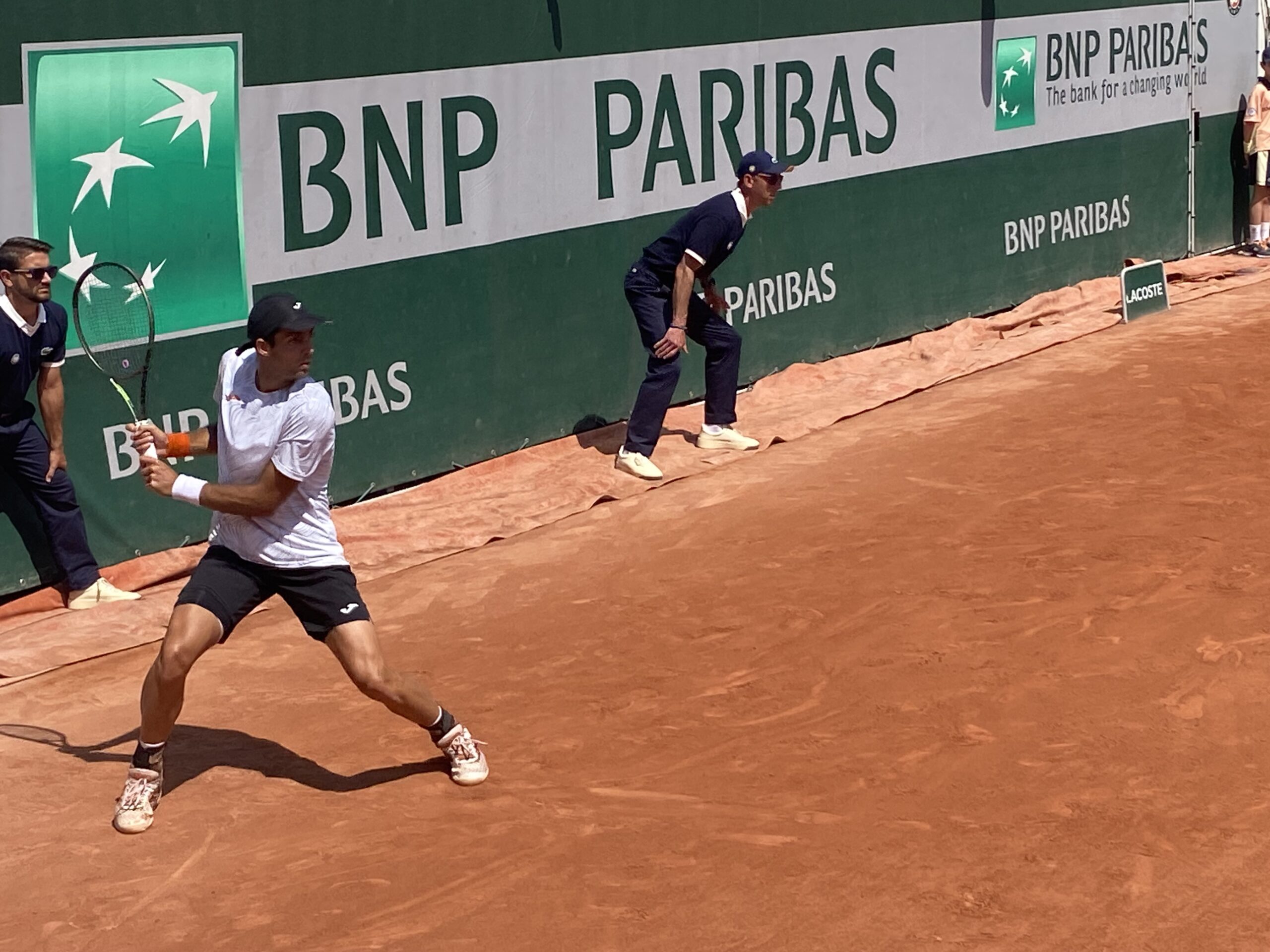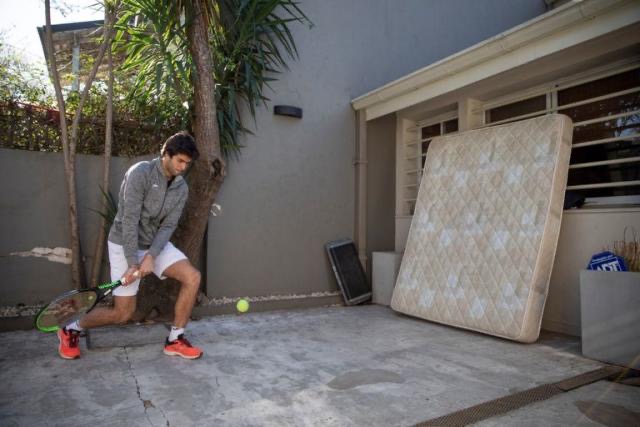PARIS – During the covid-19 pandemic, many things were possible. One example? Being a tennis player and having a mattress as an opponent.
Less than three years later, Argentine Facundo Diaz Acosta’s opponent is Jason Kubler, a 30-year-old Australian ranked 67th in the world. Diaz Acosta, 22 years old and 137th in the ATP ranking, lost 6-1 in the fifth set, but he is living one of the happiest days of his life: he is enjoying a tournament where he feels he is being treated as if he were Rafael Nadal.
And that, at Roland Garros, is saying a lot.
“Everywhere you look there’s a big difference. The people that move, all the courts are full, they are all beautiful…. The locker rooms, the balls, they serve you as if you were Nadal…. And the clay here is incredible, it doesn’t bounce a bad ball, it’s incredible, on the lines they bounce well! It’s incredible, it’s all very different,” says Díaz Acosta, who can’t stop smiling.
It’s understandable: his life goes through the Challengers, the lowest rung on the ATP tour, the tough environment in which, if you survive, you get the right (and the money, and the points) to play the ATP 250 and 500, the Masters 1000 and the Grand Slams.
Diaz Acosta, who began the year playing a challenger in Noumea, New Caledonia, had never played in the main draw at Roland Garros, a tournament he entered as a lucky loser. His two titles on the challenger tour (Oeiras and Savannah) allowed him to play qualifying for one of the four major tennis tournaments. And to feel, for a while, treated as if he were Nadal, the man who won the French Open 14 times.
“I was coming off a good run in Portugal, but I was a bit tight with the qualifying times. I tried to enjoy the place where I am, they are tournaments that are not played every day. And sometimes it was a bit difficult for me, I was looking outside, I heard the noises from the Suzanne Lenglen, everyone was shouting. It was hard for me to realise where I was, and that sometimes plays tricks on you. My goal was to enjoy myself, to get a bit of experience in these tournaments.”

Left-handed, agile and a fighter, Díaz Acosta lived these days at Roland Garros with his eyes wide open, devouring every image, every moment.
“You go to one court and it’s full, to the other and it’s full, the whole tournament is incredible, the amount of people that move. I’m surprised, the Challenger tournaments I play are something else, another life. It’s like night and day.”
It is. For being champion in Oeiras, Díaz Acosta received 9,880 euros. For reaching the main draw at Roland Garros and losing in the first round, 69,000.
It is like comparing day and night, no doubt about it.
It is also a similar contrast to the memory of those months in the middle of the pandemic when the Argentinean could not leave his house. He could not train, his mobility was forbidden. Little by little, Díaz Acosta was no longer a tennis player.
But he wanted to be a tennis player. He had been successful two years earlier at the Youth Olympic Games in Buenos Aires. Could he allow the pandemic to end his dream?
Diaz Acosta, then 19, turned to a mattress, a mattress that became his sparring partner. Placed in the courtyard of his house, sometimes inside it, if it rained, he played against the mattress and he ball would come back. Muffled, but it would come back. And so the racket would not become a foreign element.
A series of bureaucratic obstacles condemned him to stay at home, he did not have the necessary papers to move freely, much less to travel to Europe and compete.
And when the only hope became a mattress, winning or losing is a detail. Díaz Acosta remembers well those months of anguish, and that is why he values doubly what he is experiencing today. It doesn’t matter that he lost in the fifth set. On that bright Parisian spring afternoon, he knows he won: he is a professional tennis player with a whole career ahead of him.
“It took me a while to feel like a player again, to enjoy the trips, to be on the court. Today I think I’m on that path, looking to enjoy myself and have a smile on the court, because that makes you play better”.









